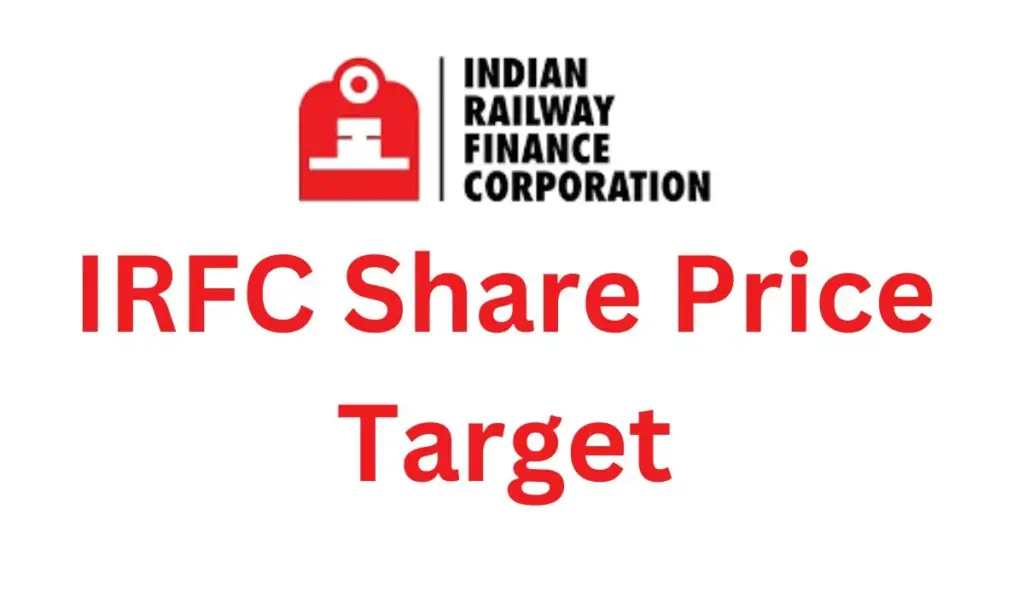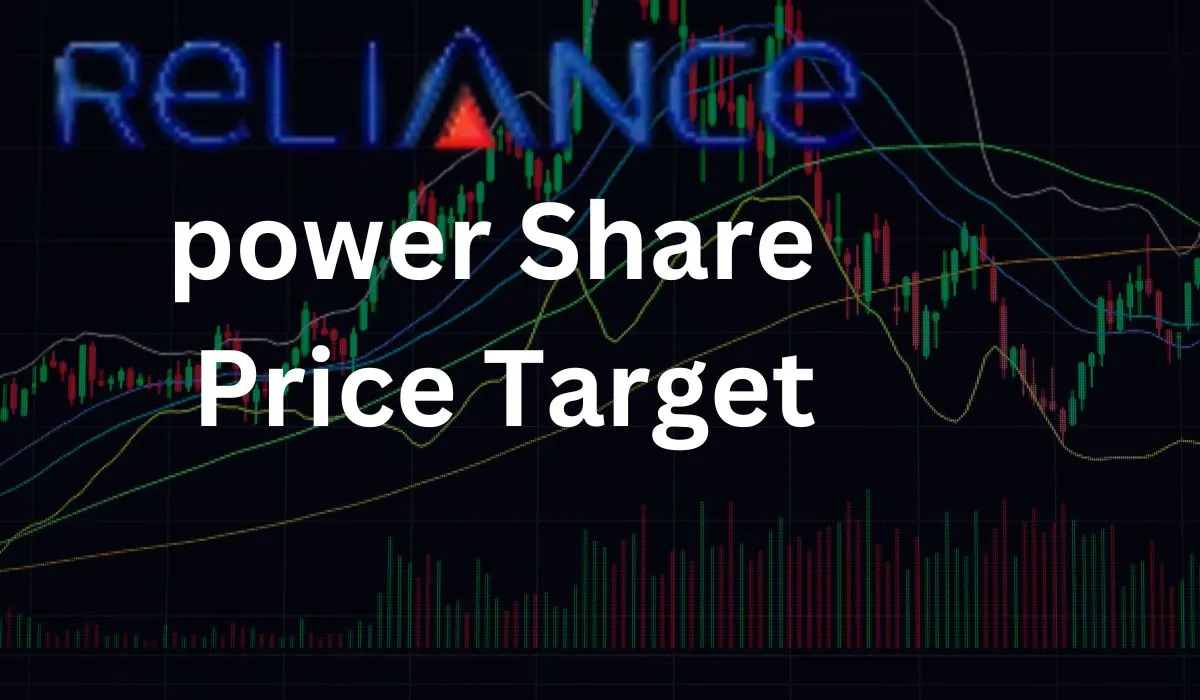Have You Ever Wondered If IRFC Could Be Your Golden Ticket?
Imagine this: You invest in a government-backed stock today, and over the next few years, it grows steadily while providing you with reliable returns.
Sounds too good to be true? Let’s talk about the (Indian Railway Finance Corporation) IRFC share price target from 2025 to 2030.
This PSU (Public Sector Undertaking) has gained the trust of investors with its steady performance and strong fundamentals. But what lies ahead for IRFC shares?
Let’s dive into the details.

Table of Contents
About IRFC
The Indian Railway Finance Corporation (IRFC) is the backbone of the Indian Railways’ financing needs.
Established in 1986, IRFC’s primary role is to fund railway projects—be it rolling stock procurement or infrastructure expansion.
It’s not just a company; it’s a key player in shaping India’s transportation future.
For instance, consider the electrification of Indian Railways.
IRFC has played a pivotal role in financing this ambitious project, making the railway network more sustainable.
In 2023, IRFC funded over 85% of Indian Railways’ rolling stock requirements. Such contributions position IRFC as an essential cog in India’s economic machinery.
So, why are investors increasingly optimistic about IRFC?
With India’s push for infrastructure development, including the National Rail Plan 2030, IRFC’s growth potential looks promising.
But what does this mean for its share price?
What Drives IRFC’s Growth Potential?
1. Government Policies and Initiatives
IRFC’s fortunes are closely tied to the Indian government’s infrastructure agenda.
The National Rail Plan 2030, for instance, aims to boost rail connectivity, electrify the entire network, and reduce carbon emissions.
These ambitious goals translate into increased funding needs—a direct growth driver for IRFC.
2. Rising Demand for Railway Projects
As India’s population grows, so does the need for efficient transportation.
From metro projects in urban areas to high-speed rail corridors, IRFC is poised to play a significant role in funding these ventures.
For example, the Mumbai-Ahmedabad bullet train project, partially financed by IRFC, highlights the company’s importance.
3. Stable Financials and Dividend Payouts
IRFC has consistently delivered robust financial results.
With steady revenue growth and regular dividend payouts, it’s an attractive option for long-term investors.
Take Anil, an investor from Punjab, who invested in IRFC shares in 2021.
Over the years, he’s seen not just steady appreciation but also reliable dividends, making his decision worthwhile.
IRFC Stock Price Market Overview
IRFC Stock Details
| Details | Value |
|---|---|
| 52 Week Low | 74.15 |
| 52 Week High | 229.00 |
| Open | 141.67 |
| Prev. Close | 141.67 |
| Volume | 1,39,70,799 |
| Lower Circuit | 113.72 |
| Upper Circuit | 170.58 |
Fundamentals
| Mkt Cap | ₹1,85,769Cr |
| ROE | 12.64% |
| P/E Ratio (TTM) | 28.54 |
| EPS (TTM) | 4.98 |
| P/B Ratio | 3.61 |
| Div Yield | 1.06% |
| Industry P/E | 24.71 |
| Book Value | 39.38 |
| Debt to Equity | 7.83 |
| Face Value | 10 |
IRFC Share Price Prediction 2025-2030
IRFC Share Price Target (2025-2030)
| Year | Price Target (₹) |
|---|---|
| 2025 | ₹385 |
| 2026 | ₹448 |
| 2027 | ₹525 |
| 2028 | ₹621 |
| 2029 | ₹710 |
| 2030 | ₹850 |
IRFC Share Price Target 2025
IRFC’s role as a financial backbone for Indian Railways has made it a favorite among investors seeking stability and growth.
With the government’s continued focus on infrastructure development, IRFC has consistently demonstrated resilience and profitability.
By 2025, analysts predict its share price will reach ₹385, driven by increased financing for railway electrification and rolling stock acquisition.
Take, for instance, IRFC’s impressive track record of financing over 85% of Indian Railways’ procurement needs.
This steady demand for capital ensures consistent revenue streams for the company.
Imagine you’re an investor holding onto IRFC shares today; the predicted growth by 2025 could significantly enhance your portfolio’s value.
However, investors must keep an eye on interest rate fluctuations and policy changes, as these factors could influence IRFC’s growth trajectory.
IRFC Share Price Target 2026
As IRFC continues to support India’s ambitious railway modernization plans, its share price is expected to climb further to ₹448 by 2026.
This growth will likely be fueled by large-scale infrastructure projects such as dedicated freight corridors and high-speed rail initiatives.
Consider a scenario where India achieves its electrification targets for railways by 2026.
IRFC’s pivotal role in financing these projects ensures its relevance and profitability in the coming years.
Real-life examples, like the successful rollout of Vande Bharat trains, highlight the government’s commitment to modernizing rail transport, indirectly boosting IRFC’s growth potential.
For investors, this means stable returns and a chance to ride India’s infrastructure wave.
IRFC Share Price Target 2027
IRFC share price target 2027, is projected to reach ₹525, reflecting its consistent performance and strong financials.
Several factors contribute to this growth, including increased public spending on railways and IRFC’s robust risk management strategies.
For instance, IRFC’s ability to maintain low borrowing costs gives it a competitive edge over other infrastructure-focused PSUs.
Additionally, its unique position as a dedicated financial arm of Indian Railways ensures sustained demand for its services.
Imagine a scenario where the railways expand their freight operations significantly. IRFC stands to benefit immensely, making it an attractive choice for long-term investors.
IRFC Share Price Target 2028
Looking further ahead, IRFC’s share price target for 2028 is estimated at ₹621.
This milestone is achievable thanks to continued government support and IRFC’s strategic focus on diversifying its funding sources.
However, challenges such as rising competition and potential policy shifts could pose risks.
To illustrate, imagine a scenario where other PSUs like REC or PFC start competing aggressively in railway financing.
While IRFC’s monopoly-like position gives it an edge, adapting to changing market dynamics will be crucial for sustaining growth.
For investors, this year represents a balance between seizing opportunities and managing risks.
IRFC Share Price Target 2029
By 2029, IRFC’s share price is projected to rise to ₹710, solidifying its position as a reliable long-term investment.
The government’s push for sustainable transportation, including green energy initiatives for railways, will likely drive this growth.
Take the example of India’s commitment to reducing carbon emissions.
IRFC’s funding for electrification projects aligns perfectly with this goal, ensuring its relevance in the coming years.
For long-term investors, holding onto IRFC shares during this period could result in substantial returns, especially as the company continues to innovate and expand its financial services.
IRFC Share Price Target 2030
As we look toward 2030, IRFC’s share price is expected to soar to ₹850.
This significant growth reflects India’s ongoing infrastructure revolution and IRFC’s pivotal role in financing it.
With railways becoming more efficient and sustainable, IRFC’s relevance will only increase.
Imagine you’re holding IRFC shares today.
By 2030, your patience and trust in this PSU could pay off handsomely.
However, investors must remain vigilant about potential risks, such as changes in government policies or economic downturns.
Diversifying your portfolio with other promising stocks, like Tata Power during its 52-week low, could further enhance your investment strategy.
What Are the Risks of Investing in IRFC?
Investing in any stock involves risks, and IRFC is no exception.
While the company has a strong backing from the Indian government and plays a vital role in financing the Indian Railways, certain risks can impact its growth and share price performance.
Let’s explore these risks in detail.
1. Dependence on Indian Railways
IRFC’s fortunes are tightly linked to the performance of the Indian Railways.
Any financial strain, operational inefficiencies, or delays in government projects could directly affect IRFC’s revenues and growth.
For instance, if Indian Railways faces budget cuts or reduces borrowing, IRFC’s business could take a hit.
2. Regulatory and Policy Risks
As a public sector undertaking (PSU), IRFC operates within a framework dictated by government policies.
Sudden changes in regulations, delays in infrastructure spending, or unexpected political decisions could negatively impact its operations.
For example, changes in tax laws or interest rate regulations could affect profitability.
3. Interest Rate Fluctuations
IRFC’s business model relies heavily on borrowing and lending.
Fluctuations in interest rates can increase its borrowing costs, reducing profit margins.
In a rising interest rate environment, the cost of capital could escalate, affecting the company’s financial health.
4. Limited Revenue Streams
IRFC primarily finances railway projects, making its revenue streams less diversified compared to other infrastructure financing companies.
This lack of diversification increases its vulnerability to sector-specific challenges.
5. Market Volatility and Investor Sentiment
PSU stocks like IRFC often face market perception challenges.
While they are considered safe, they may lack the appeal of high-growth private sector companies, leading to slower stock price growth.
Negative news or changes in sentiment towards PSU stocks could affect its market performance.
6. Delay in Railway Modernization Projects
The government has ambitious plans for railway electrification and modernization, but delays in execution could directly impact IRFC’s growth.
For example, if critical projects are postponed, IRFC’s financing opportunities may be deferred, affecting its revenue projections.
7. Global Economic Factors
Although IRFC’s operations are primarily domestic, global economic conditions can indirectly impact the company.
Recessionary trends, inflation, or geopolitical issues could affect government spending and IRFC’s funding capabilities.
Mitigating the Risks
Despite these risks, IRFC has some mitigating factors.
Its close ties with the government provide stability, and its business model ensures consistent revenue from the Indian Railways.
However, investors should consider these risks carefully, especially if they are looking for long-term returns.
By understanding these challenges, you can make more informed decisions about investing in IRFC.
Always balance the potential rewards with the risks and consider diversifying your portfolio to minimize exposure to sector-specific uncertainties.
Conclusion
As we look ahead to 2030, IRFC emerges as a compelling investment option for those seeking steady growth and reliability.
Its government backing, robust financials, and pivotal role in India’s infrastructure story make it a stock worth considering.
However, no investment is without risks, so it’s essential to evaluate your financial goals and risk appetite.
If IRFC doesn’t fit your strategy, you might want to consider Tata Power—especially if it’s trading near its 52-week low.
A diversified portfolio is always a wise choice.
What are your thoughts on IRFC’s growth potential?
We’d love to hear your feedback!
Share this article with your friends and fellow investors, and let’s start a conversation about smart investing.
FAQs: IRFC Share Price Target
What is IRFC share price target for 2025?
By 2025, IRFC’s share price is expected to reach ₹385, driven by increased funding requirements for railway projects.
Is IRFC a good buy for the long term?
Yes, IRFC’s strong financials, regular dividends, and government backing make it a solid choice for long-term investors.
Why is IRFC’s share price fluctuating?
Market conditions, policy changes, and financial performance can impact IRFC’s share price.
What is IRFC’s share price target for 2030?
By 2030, IRFC shares are projected to reach ₹850, reflecting its role in India’s infrastructure growth.
Who are IRFC’s competitors?
IRFC competes with other PSUs like REC and PFC, which focus on infrastructure and power sector financing.






